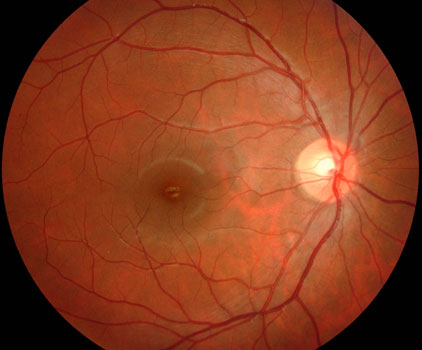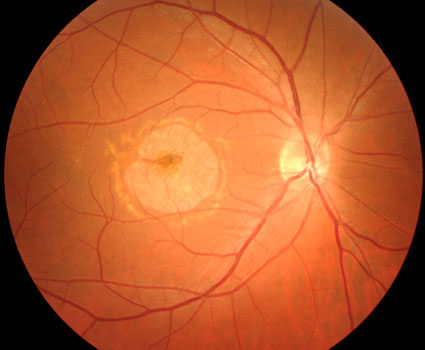Plaquenil (hydroxychloroquine) is a medicine commonly used to treat patients with systemic lupus erythematosus and rheumatoid arthritis. After prolonged use, it can sometimes damage the macula and cause central vision loss. Typically, the macula loses its orange pigment, giving the appearance of a bullseye. This is called bullseye maculopathy and is the classic finding of Plaquenil toxicity.

Normal macula.

Plaquenil Toxicity with a bullseye pattern of central pigment loss.
The risk of macular damage is dependent on the daily dose and duration of use, although kidney disease and tamoxifen increase this risk. At recommended doses, the risk of toxicity up to 5 years is under 1%, under 2% up to 10 years, and rises to almost 20% after 20 years.
Patients who are receiving Plaquenil need to have a yearly ocular examination (beginning at least within 5 years of starting therapy), including a dilated retinal examination, central visual field testing, and OCT scanning. The drug is usually discontinued at the earliest sign of macular damage since vision loss is usually permanent and can even progress after stopping it.


OCT scan (top) of normal macula compared to Plaquenil Toxicity (bottom) with loss of the outer retinal tissue around the macular center (red boxes)
View more retina images at Retina Rocks, the world’s largest online multimedia retina image library and bibliography repository.



